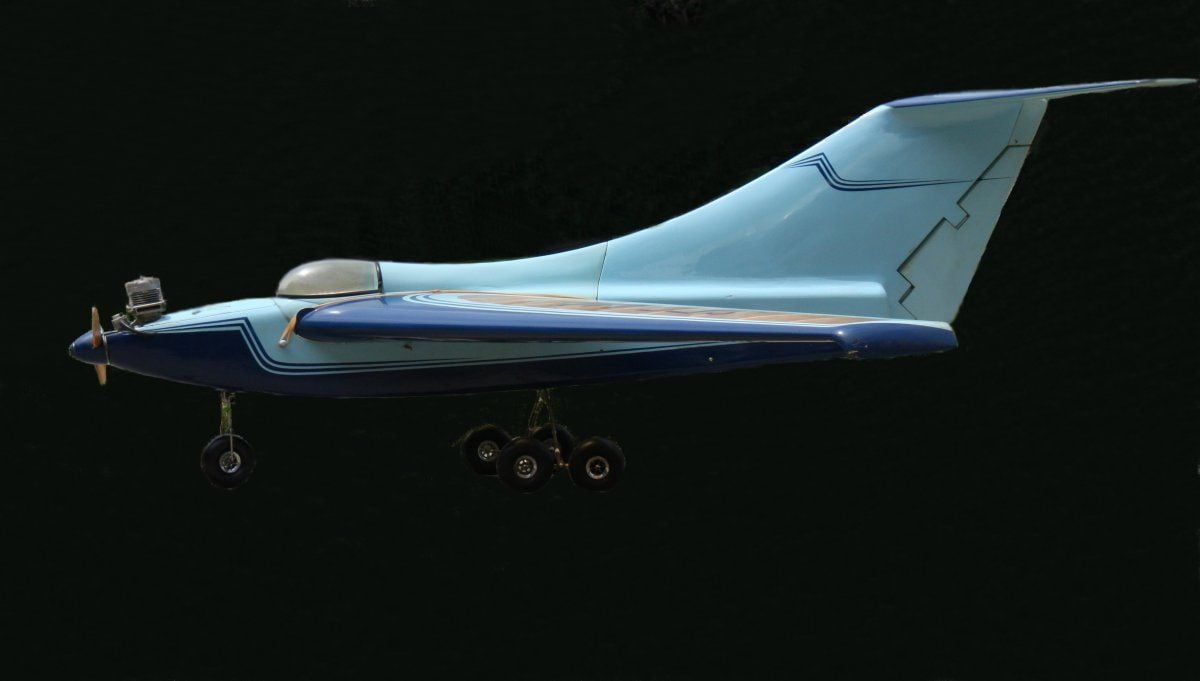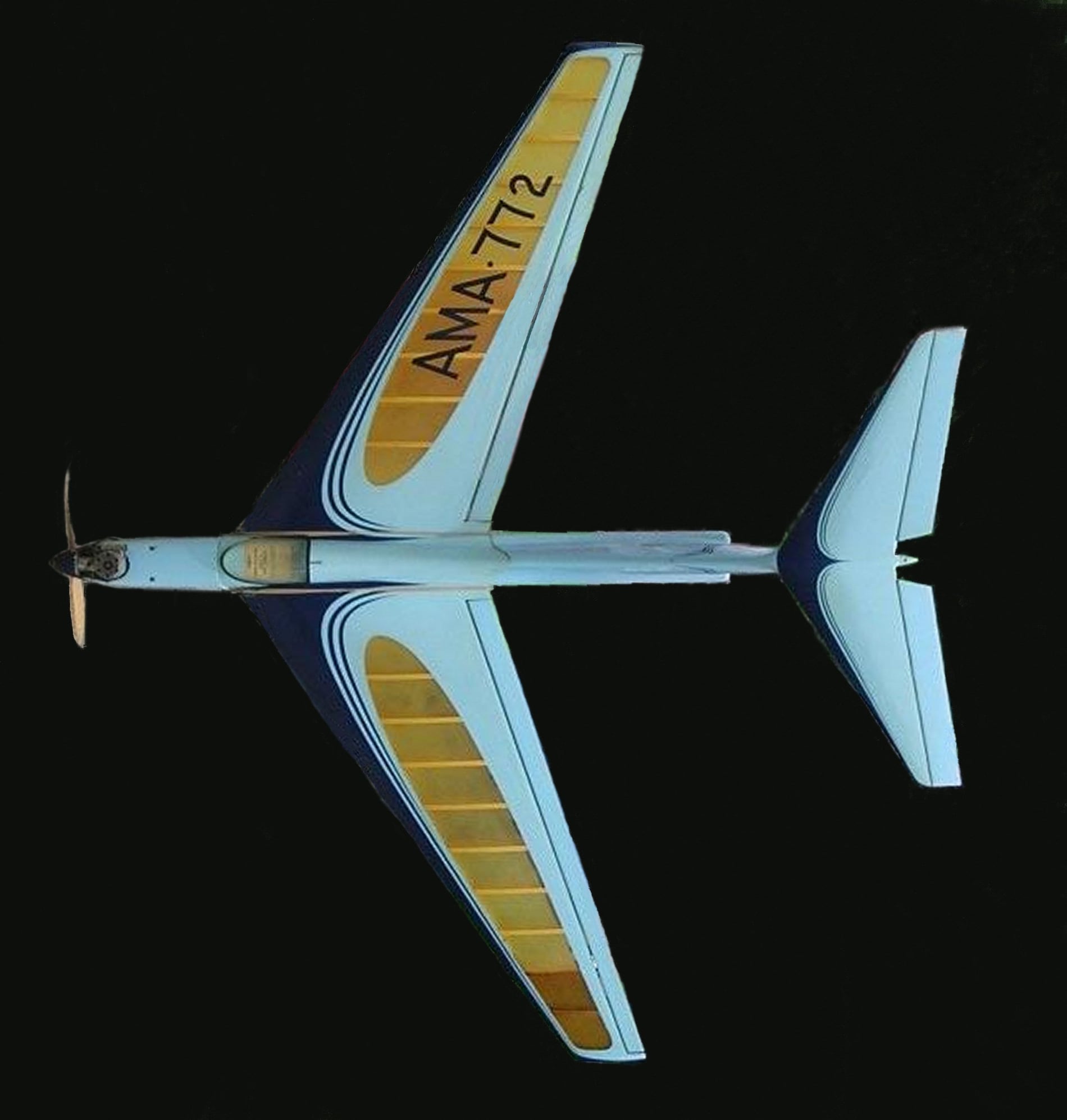The Proportional Radio and Cirrus
As mentioned, Tom specifically designed Cirrus for a proportional radio. Tom himself was an expert in using (toggle switch)
reed radios,but was essentially talked into working with early proportional radio developer Don Brown. As world champion, Brown wanted Tom on board using one of his systems and Tom was interested enough to devote his next design (Cirrus), for use with Brown's latest proportional. Design changes for Cirrus (other than the obvious addition of the concept of using retractable landing gear-- rare in 1963), included reducing the amount of dihedral, and the angle of the rudder may have been changed somewhat because proportional radio was totally different than reeds--there was no "blipping" of the totally on or off toggle switches that reed radios used to produce deflection of the control surfaces.
Discussing Proportional Radio- Of course proportional was much more intuitive to use for the pilot and produced much smoother response from the model. Proportional opened up R/C modeling to thousands of modelers who no longer had to contend with reeds. It's hard for today's modern R/C pilots to imagine flying totally by "blipping" toggle switches to control the aircraft. The "art" of timing the "blips" exactly to produce the desired effect had a much higher learning curve. Naturally, models tended to "jump" off the ground on takeoff, and flying by the average modeler tended to be more "jerky".
Precision pattern flying involved a refined and delicate balance of trying to anticipate in advance what series of "blips" would be needed to produce the desired effect to perform smooth pattern maneuvers. You had to be way ahead of the plane due to the delayed response of reeds, and the "all or nothing" response of the control surfaces. Flying reeds was very much an "art", similar to learning to play the piano.
In contrast, proportional was so much easier, and "easier" translated to much higher participation in R/C. The relatively small, elite group of pioneer pattern pilots of which Tom was a member, dramatically increased once proportional radios became commonplace. In the end, Tom Brett decided against converting to the new radio format,
but his Cirrus was his one foray into the approaching age of proportional. Cirrus was his last really "state of the art" competitive aircraft as will be discussed below.
As we'll see later,Tom's experience with the Dee Bee Quadruplex (in spite of its reputation for being relatively reliable for the time), wasn't very positive, and rather than try other systems, he eventually elected to go back to his beloved reed radio that he was a master at. It is likely that if his experience had been more positive, he may have stayed with the new radios, but we'll never know for sure. There was still a majority of reed pilots back in early 1963 with no need or pressure to convert. In 1963, proportional was something brand new and far from perfected. Reeds were still the standard.
It seems at least to me that the problems with Cirrus we will discuss may have changed his focus from primarily wanting to be on the cutting edge of competition,
to following other personal interests and challenges in R/C. After Cirrus, Tom's next project would be his award winning design TBX-1 in 1965. While less competitive than some planes, TBX still flew pattern well, but It was first and foremost, a semi-experimental, extremely futuristic design--and totally different from anything else.
The emphasis had shifted from being on the cutting edge of competition to exploring his interests in design.. In 1963, Cirrus really was on the edge of technology and pressing the competitive envelope. Cirrus was Tom's last design that was
primarily for competition.

